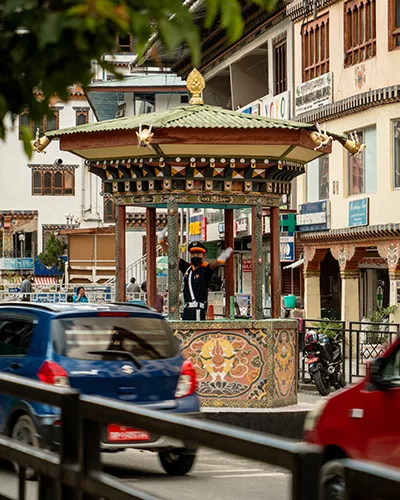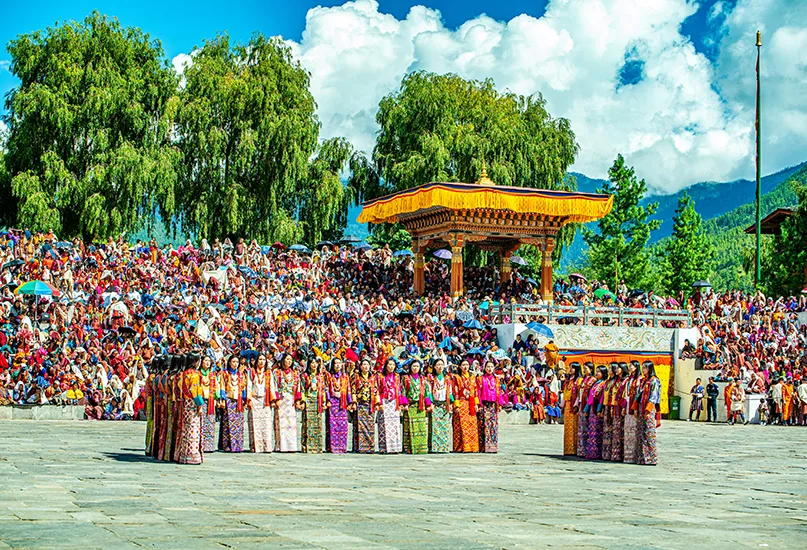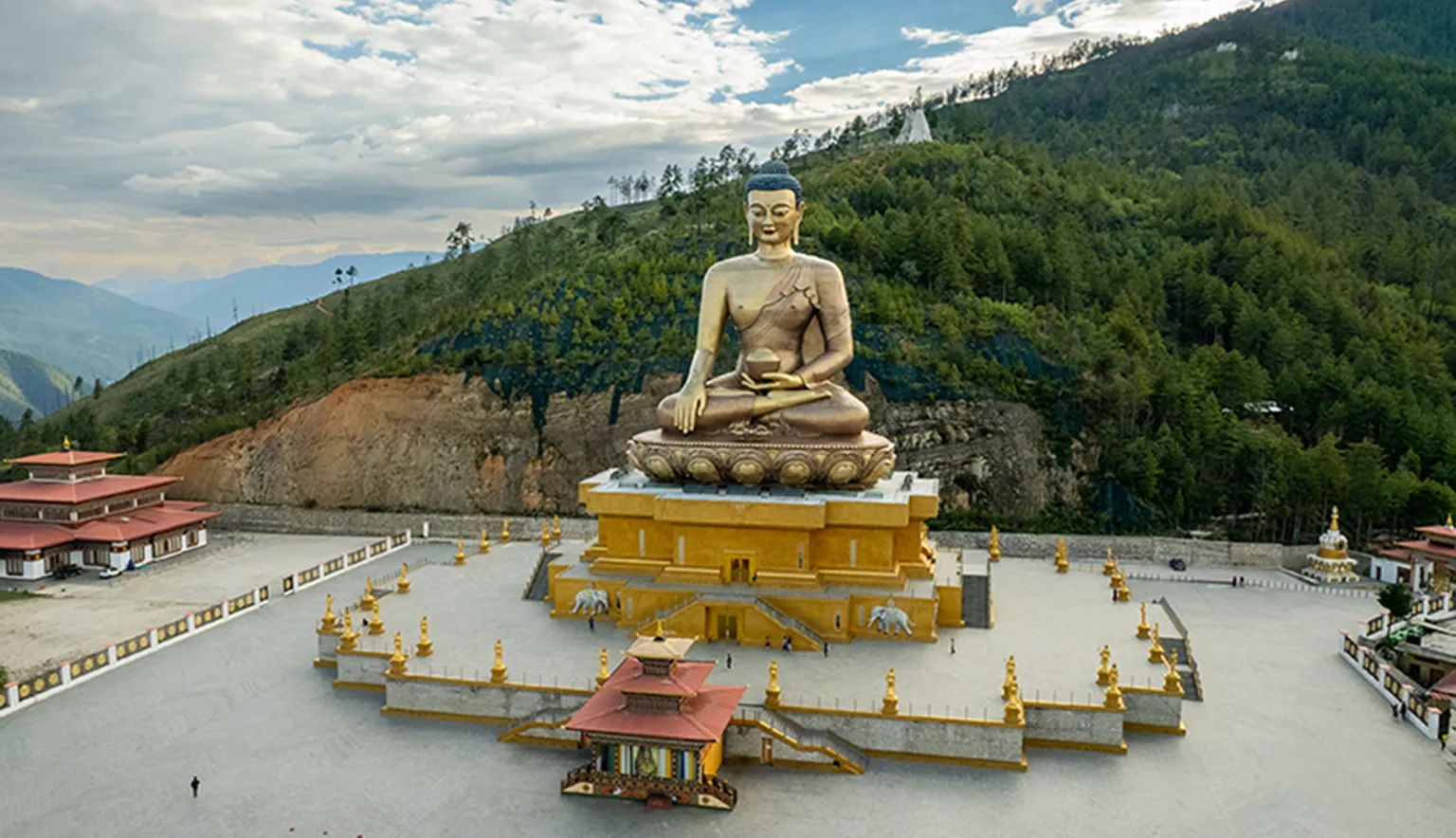Flaunting an air of eccentricity, Bhutan’s lively capital city of Thimphu expertly merges a unique brew of modern commercialism and time-honoured tradition, with an array of shops, internet cafés, karaoke clubs, and hip coffee shops lined up right next to old fortresses, forests, and monasteries where groups of crimson-robed monks trail in and out.
THIMPHU IN FOCUS
Thimphu only became the capital of Bhutan in 1961; however, 60 years proved more than enough for the eclectic city to thrive as a cultural heart of the country, able to preserve its heritage whilst growing upwards and outwards.
Home to the Taschichho Dzong, the main secretariat building which houses the throne room, the National Library of Bhutan, which preserves ancient texts and manuscripts, and a plethora of cultural festivals and events that take place throughout the year, the city is a stronghold of Bhutanese art, architecture, and culture.


Even though it is considered the country’s most modern city, Thimphu has undoubtedly maintained the unique appeal of its past, framed by teeming and lush green forests, pearl-tipped mountain peaks, and statues of Buddhist deities dotted throughout.
For a taste of local life, head to the city’s weekend market located next to the Wang Chhu River, which sees tradespeople and farmers from across the country working stalls with homegrown goods. Here, city dwellers, villagers, and travellers alike can rub shoulders and meander through stands of homemade cheeses, freshly steamed momos, handcrafted Himalayan beads, colourful masks, Buddhist paintings known as thangkas, handwoven textiles, and so much more.
Thimphu truly embodies the essence of the country’s vast tradition and charm whilst blending its heritage with more recent modern influences.
This captivating reflection of Bhutan’s ability and dedication towards maintaining its culture in the midst of implementing modernity is as unique as it is unmissable. Thimphu is a breathtaking symbol of tradition, spirituality, and progress.




























